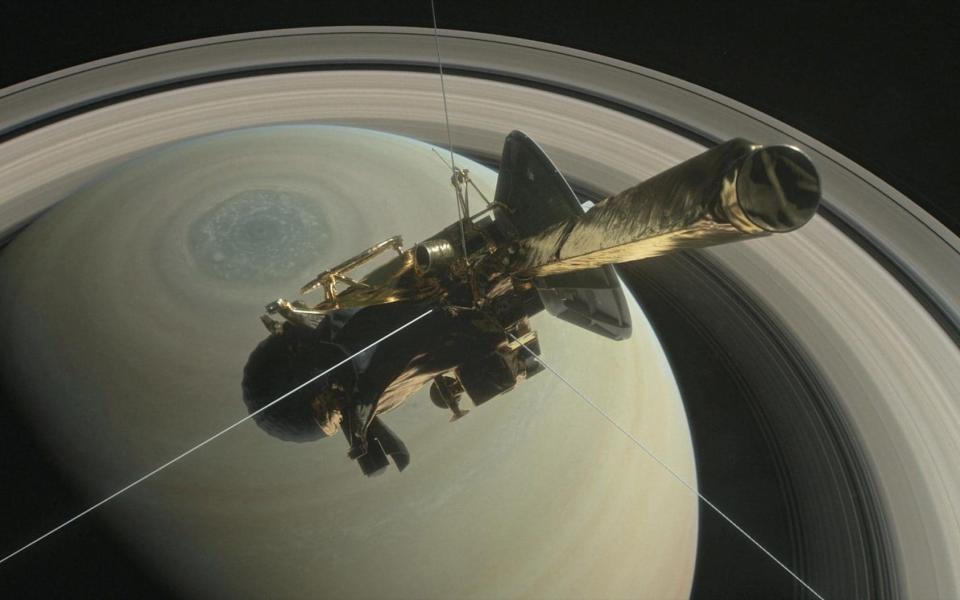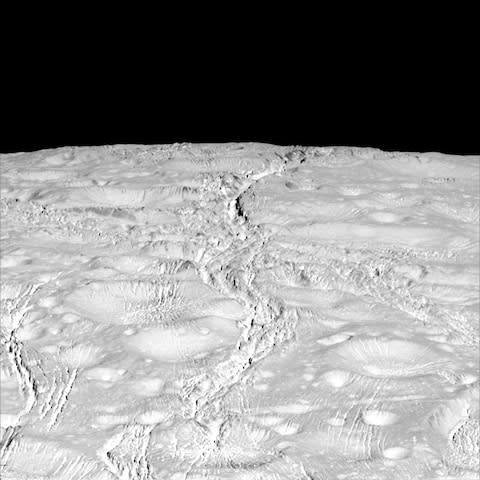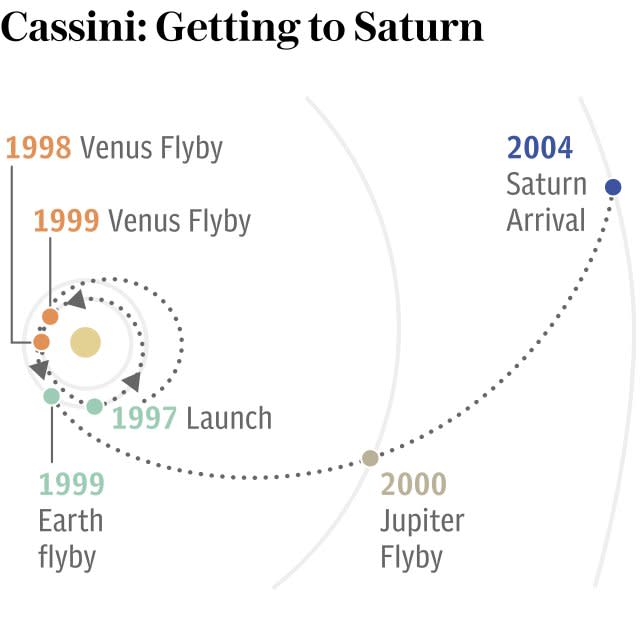Cassini grand finale: How and when will Nasa's spacecraft meet its fiery end?

Nasa scientists are preparing to say farewell to the Cassini space probe tomorrow as it begins its spectacular suicidal dive into Saturn's atmosphere.
The 22ft robot craft will break into fragments and burn up as it ploughs into the ringed planet's cloud tops at about lunchtime on Friday, ending a 20-year mission that cost £2.9 billion.
Cassini was launched in 1997 and took seven years to travel two billion miles to Saturn, before embarking on a 13 year journey of discovery that delivered a wealth of scientific data on the planet and its moons.
Here's everything you need to know about Cassini and how it will meet its ultimate fate.

What is Cassini?
Cassini-Huygens was a joint project between Nasa, the European Space Agency and the Italian Space Agency which first launched 20 years ago.
Its aim was to study Saturn and its moons from close up and in the process learn more about the solar system and how it was formed. Scientists were especially interested in Saturn's giant moon Titan, which has a nitrogen and methane atmosphere and in some ways resembles an early version of Earth.
The Huygens probe was attached to the spacecraft and travelled with Cassini until 2005, when it detached and landed on Titan in 2005. Both have beamed back invaluable images about Saturn and its moons.
Why is Cassini being killed off?
The spacecraft has been running out of the fuel needed to make course corrections. Scientists were also concerned that it could soon prove impossible to control, and there was a remote chance of it colliding with Titan or Enceladus - both worlds that conceivably could host life. Even though Huygens had already landed on Enceladus, Nasa did not want to risk contaminating the pristine environments with Earth bugs. Safe disposal is considered the best solution.
What will happen tomorrow?
Scientists expect to lose contact with the probe at around 12.55pm UK time as Cassini begins to feel the effects of drag from Saturn's atmosphere and starts to tumble, causing its dish antenna to lose sight of Earth.
At this point the craft will be roughly 930 miles above the planet's cloud tops. From then on, Cassini will start to burn like a meteor and tear apart. Within two minutes of signal loss the probe will be completely consumed.
During the dive Cassini will be travelling at around 70,000mph. Its plunge to destruction will mark the end of a series of 22 daring orbits that allowed the probe to slip between Saturn and its rings.
Because Saturn is so far away, the spacecraft's last gasp transmissions will take 83 minutes to reach Earth.

How did Cassini get to Saturn?
Cassini-Huygens launched on 15 October 1997 from the Cape Canaveral air force station in Florida, where it began its long journey to the Saturn system.
On the way it made fly-bys of Venus, the Earth, and Jupiter to receive gravitational "kicks" that boosted its speed to more than 42,500mph. Cassini arrived at the ringed planet in July 2004.
What does Cassini look like?
The unmanned spacecraft is 22.3 feet tall, with a maximum diameter of 13.1 feet, which is approximately the size of an empty 30-passenger school bus. It's powered by a small plutonium-fuelled nuclear reactor.

How have scientists been communicating with Cassini?
Saturn is on average 890 million miles from Earth, and it takes around 83 minutes for radio waves to cross that distance at the speed of light, making communication difficult. Ground controllers haven't been able to give Cassini "real time" instructions and instead have relied on extensive pre-programming.
What did Huygens achieve?
The European lander provided the high point of the mission when it successfully touched down on the surface of Titan in January 2005. It was the first time any spacecraft had landed on an outer solar system world. As it parachuted down through the moon's atmosphere, Huygens captured images of surprisingly Earth-like features such as shorelines and river systems. Scientists now know Titan has rivers, lakes and seas filled with liquid methane and ethane.

What else has Cassini discovered?
Cassini identified a global watery ocean beneath the icy surface of Saturn's moon Enceladus that scientists believe could harbour simple life. It also found seven new moons, six of which have been named, carried out detailed studies of Saturn's rings, and spotted raging hurricanes at both of Saturn's poles. The mission also found that the moon Titan contains many earth-like features such as wind, rain and seas. The 300-year-old mystery of how the moon Iapatus acquired its strange two-tone appearance was also solved.

 Yahoo Finance
Yahoo Finance 